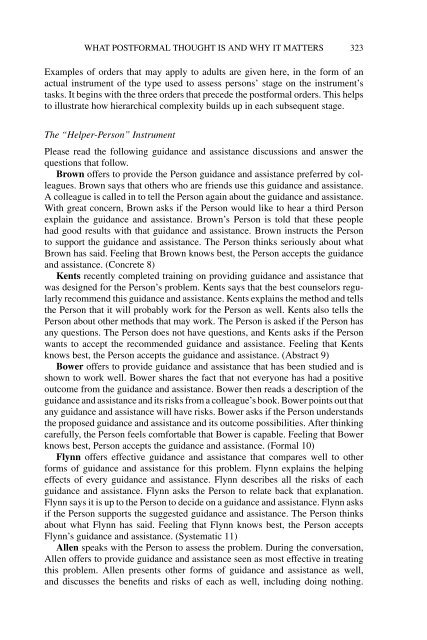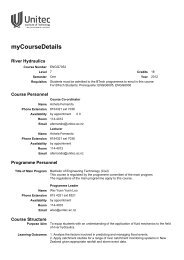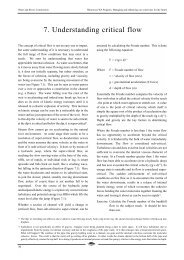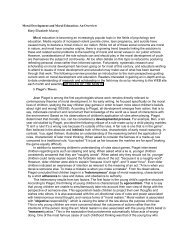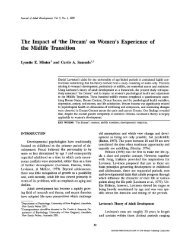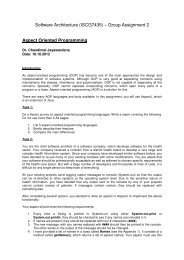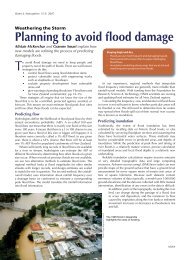WHAT POSTFORMAL THOUGHT IS, AND WHY IT MATTERS
WHAT POSTFORMAL THOUGHT IS, AND WHY IT MATTERS
WHAT POSTFORMAL THOUGHT IS, AND WHY IT MATTERS
Create successful ePaper yourself
Turn your PDF publications into a flip-book with our unique Google optimized e-Paper software.
<strong>WHAT</strong> <strong>POSTFORMAL</strong> <strong>THOUGHT</strong> <strong>IS</strong> <strong>AND</strong> <strong>WHY</strong> <strong>IT</strong> <strong>MATTERS</strong> 323<br />
Examples of orders that may apply to adults are given here, in the form of an<br />
actual instrument of the type used to assess persons’ stage on the instrument’s<br />
tasks. It begins with the three orders that precede the postformal orders. This helps<br />
to illustrate how hierarchical complexity builds up in each subsequent stage.<br />
The “Helper-Person” Instrument<br />
Please read the following guidance and assistance discussions and answer the<br />
questions that follow.<br />
Brown offers to provide the Person guidance and assistance preferred by colleagues.<br />
Brown says that others who are friends use this guidance and assistance.<br />
A colleague is called in to tell the Person again about the guidance and assistance.<br />
With great concern, Brown asks if the Person would like to hear a third Person<br />
explain the guidance and assistance. Brown’s Person is told that these people<br />
had good results with that guidance and assistance. Brown instructs the Person<br />
to support the guidance and assistance. The Person thinks seriously about what<br />
Brown has said. Feeling that Brown knows best, the Person accepts the guidance<br />
and assistance. (Concrete 8)<br />
Kents recently completed training on providing guidance and assistance that<br />
was designed for the Person’s problem. Kents says that the best counselors regularly<br />
recommend this guidance and assistance. Kents explains the method and tells<br />
the Person that it will probably work for the Person as well. Kents also tells the<br />
Person about other methods that may work. The Person is asked if the Person has<br />
any questions. The Person does not have questions, and Kents asks if the Person<br />
wants to accept the recommended guidance and assistance. Feeling that Kents<br />
knows best, the Person accepts the guidance and assistance. (Abstract 9)<br />
Bower offers to provide guidance and assistance that has been studied and is<br />
shown to work well. Bower shares the fact that not everyone has had a positive<br />
outcome from the guidance and assistance. Bower then reads a description of the<br />
guidance and assistance and its risks from a colleague’s book. Bower points out that<br />
any guidance and assistance will have risks. Bower asks if the Person understands<br />
the proposed guidance and assistance and its outcome possibilities. After thinking<br />
carefully, the Person feels comfortable that Bower is capable. Feeling that Bower<br />
knows best, Person accepts the guidance and assistance. (Formal 10)<br />
Flynn offers effective guidance and assistance that compares well to other<br />
forms of guidance and assistance for this problem. Flynn explains the helping<br />
effects of every guidance and assistance. Flynn describes all the risks of each<br />
guidance and assistance. Flynn asks the Person to relate back that explanation.<br />
Flynn says it is up to the Person to decide on a guidance and assistance. Flynn asks<br />
if the Person supports the suggested guidance and assistance. The Person thinks<br />
about what Flynn has said. Feeling that Flynn knows best, the Person accepts<br />
Flynn’s guidance and assistance. (Systematic 11)<br />
Allen speaks with the Person to assess the problem. During the conversation,<br />
Allen offers to provide guidance and assistance seen as most effective in treating<br />
this problem. Allen presents other forms of guidance and assistance as well,<br />
and discusses the benefits and risks of each as well, including doing nothing.


